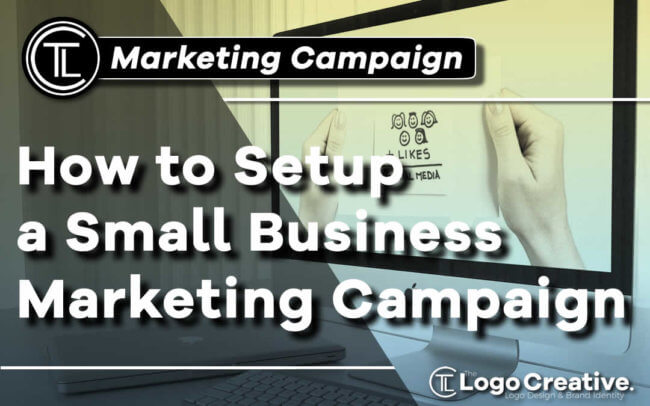In this article we discuss How to Setup a Small Business Marketing Campaign.
Let’s get this straight, there is no such thing as a perfect marketing plan. There are plenty of articles present over the internet about how to set up a business campaign. Unfortunately, there is no such thing as a one-size-fits-all when it comes to creating marketing strategies. Therefore, you must realize that you have to figure out a strategy that suits best for your business type.
For small business marketing, the biggest concern often observed is the marketing budget, and too often marketers believe that they need a hefty budget, even with the assistance of outsource internet marketing specialists, to come up with an immaculate marketing strategy. However, that is not entirely true; a marketing plan that is well-thought-out and straightforward with a clear agenda can help your business succeed.
Table of Contents
What is a Marketing Campaign?

A term widely used in business; a marketing campaign is a dedicated effort to persuade consumers towards a specific target action. Marketing campaigns are often involved in giving a brand:
- Emotion
- Brand identity / ideology
- Personality
By the end of this article, you’ll be able to successfully execute a marketing campaign for your small business. For small business owners/marketers looking for ideas to ace their marketing endeavors, we have collected a list of steps to set up a campaign for your business to outshine:
1. Define your goals
This might not be the first time you are reading how important it is to set goals, however, this should be your first and foremost step. According to research by CoSchedule:
“Marketers who set goals are 376% more likely to report success than those who don’t. And 70% of those successful, goal-setting marketers achieve them.”
While thinking of a marketing strategy it is important that you formulate well-defined goals in alignment with your aims and objectives.
The more quantifiable your goals are, the easier it will get to monitor the achieved progress at any given time. While defining goals, don’t be vague, rather explicitly define quantifiable and measurable goals.
To set solid and concrete goals, a commonly used technique is the S.M.A.R.T technique, explained below:
- Specific
Specific goals state exactly what you want to achieve. An example of a specific goal is, “We want our sales to increase 10% annually”.
- Measurable
A goal that cannot be measured is hard to achieve. A good example of a measurable goal is, “We want to increase our web traffic by 10%”.
- Achievable
Too often, goals are set being too optimistic, however, you should always set goals that are realistically achievable. A good example of an achievable goal is “We will increase our web traffic by 10% through 2-3 YouTube sessions every week”.
- Relevant
Relevancy is key; make sure your high priority goals are relevant to your end goal and in accordance with the ongoing business trends. A good example of a relevant goal is, “We are going to increase engagement on our Social media platforms by replying to each comment”.
- Time-bound
One of the most common issues faced is that of time. The goal that is not time-bound are often taken lightly and hence often not achieved. Set a timeline for every goal, for example, “We want our website to go live in 20 days”.
2. Areas to focus

There are a lot of ideas that would pop-up in your mind, but instead of going haphazardly on everything, it’s better to define the areas you want to focus on. Some common business goals are:
- Increased profits
- Increase sales
- Growing business recognition
- Develop a strong brand identity
- Have multiple revenue streams
- Expand market shares
However, to achieve these business goals you must know how to use the right type of marketing. Some common marketing goals are:
- Increased web traffic
- Better conversion rates
- Email/subscribers list
- Social Media Engagement
You can link the two types of goals through a plan of action. These goals must direct on the tasks you need to accomplish in order to ultimately achieve the high-level goal. Linking these goals will give you a set of actions to be performed, for instance, increasing website traffic through newsletters.
3. Identify what to promote
Having clarity on what you really want to promote through a marketing campaign is essential. For every business type, the objective varies depending upon its goals. You may want to promote the following via the marketing campaign:
- A special offer
- Products
- Services
- A specific item amongst multiple things
The reason behind your marketing campaign helps in defining the nature of the campaign, and other factors such as budget, platforms, and strategies further shape your campaign. Once you are clear about what you want to promote, you can explore further within the options.
For instance, if a clothing brand wants to launch a marketing campaign for Mother’s Day, they can use influencer marketing to promote the special offer. Many companies use tools such as Active Campaign
4. Identify your target audience
One of the most crucial steps is to precisely identify your target audience. There are several tools and software available to help you track and monitor your target audience. Once your target audience is identified, your campaign can yield fruitful results.
To identify your target audience:
- Analyze your existing customer base
- Research your competitors
- Select demographics
- Age
- Gender
- Location
- Income level
- Interests
- Create buyer personas
Observe your audience to identify the patterns including their personality types, how often they shop, what time of the month they engage in the most, etc., to know better about the customer mindset.
5. Define an advertising budget
No matter how small or big your budget is, you still need to plan it to spend the money wisely. While setting a budget for your marketing campaign you must be realistic and consider all the trends.
- Lessons learned
If you have advertised ever before, consider the budget you allocated for that campaign and how it impacted the results. Past lessons can help you improve your future decisions.
- Realistic budget
You must calculate the amount you are willing to spend for each customer. Cost per conversion can help you identify a viable budget for your campaign by giving a realistic value of the amount you are willing to spend for each customer. A rate that attracts a customer for less is emphasized while setting a marketing budget.
- Competitor analysis
It is also important to learn from your competitors and notice what their benchmarks are, this can help you identify a rough estimate for your campaigns. Industry benchmarks can help identify metrics to measure your progress against.
6. Identify platforms
There are several channels for marketing campaigns that you can consider. Some of the most common ones being:
- Radio
- TVCs
- Social media
- Digital media
- Print media
- Online advertisements
Factors involving the decision to choose the medium are often:
- Budget
- Presence of audience
For a small business, it would be difficult to afford TVCs based on a limited budget. Similarly, if your target audience isn’t the one who would watch TV, then there is no point in choosing TVCs for your marketing campaign. Also, if your target audience is people who use social media more, then you can make use of Digital marketing services and target platforms like LinkedIn, Twitter, Facebook, Instagram, Google, etc. Identifying the most appropriate platforms for your marketing campaign can help you create a massive impact on the audience and help you succeed in achieving the desired goals.
7. Focus on Graphics
Design and graphics play a major role in attracting customers and audiences. Poor graphics and design can cause resistance in the audience on trusting your brand. Focusing on design and graphics is an integral part of marketing. As the audience gets redirected to your platform through your advertisement, they shouldn’t leave the platform because of the poor graphical interface. Focus on:
- Graphical assets
- Web designs
- Other graphical content made for advertisement
8. Launch and monitor
You are now ready to launch your marketing campaign. Now you can keep track of the impact that your campaign is creating depending on your aims and objectives. For example, if your goal was to increase sales of a certain product, monitor how many people are buying the product now.
Has the number of buyers increased? Are there any new customers? Is there a specific type of audience who is more interested in your products?
Observing these things can help you identify the reasons and patterns of your audience for your future marketing attempts. The results you obtain can be utilized to achieve better results in the future.
Moreover, after you have successfully launched the campaign, it is important to analyze the results:
- Was the campaign able to achieve these goals? If yes, then how much?
- What steps were helpful to reach the desired goals?
- What were the things that went wrong?
- How can you improve for the next campaign?
- Was there any unanticipated outcome?
- Would you repeat the campaign again?
- Which aspects need improvement?
Answering these questions can help you analyze the overall impact of the campaign. These results and findings can prove to be helpful for future marketing campaigns and help you improve your strategies every time as well.
Many companies use tools such as Active Campaign as a CRM tool for email marketing and marketing automation, this will help keep your campaign running smoothly. We hope this has helped you in How to Setup a Small Business Marketing Campaign
Join The Logo Community
If you would like more personal tips, advice, insights, and access to our community threads and other goodies join me in our community. You can comment directly on posts and have a discussion.
Save an exclusive 20% off GrindKit – The package is for remote designers. We use it and recommend it. ?
Author Bio
Shaheryar provides ghostwriting and copywriting services. His educational background in the technical field and business studies helps him in tackling topics ranging from career and business productivity to web development and digital marketing. He occasionally writes articles for Dynamologic Solutions.



